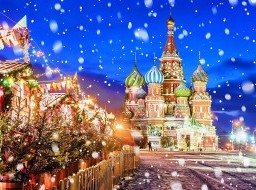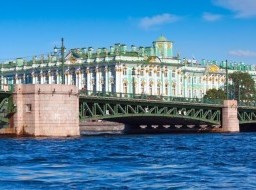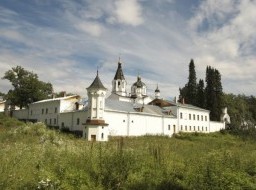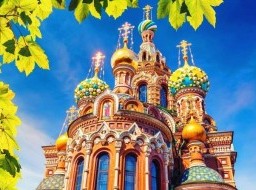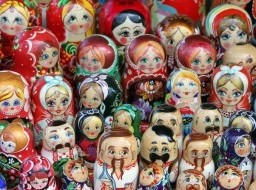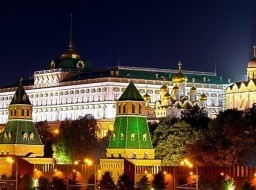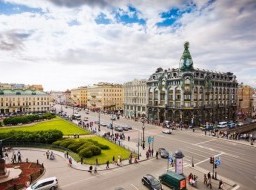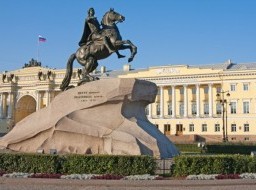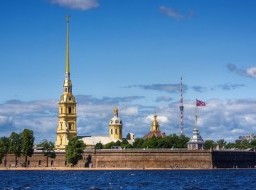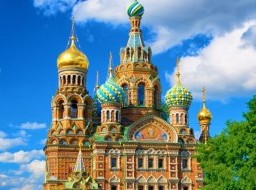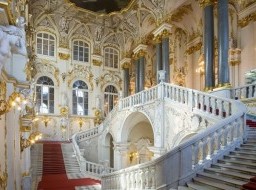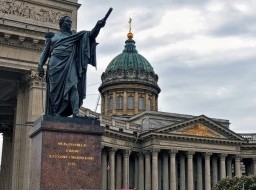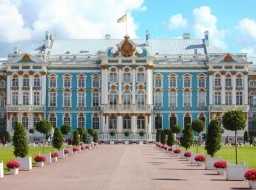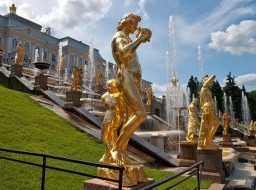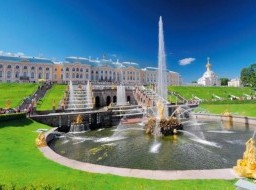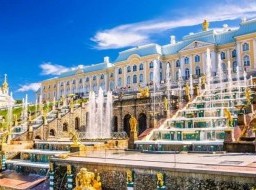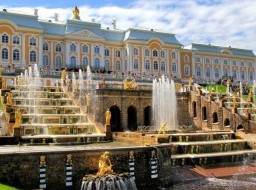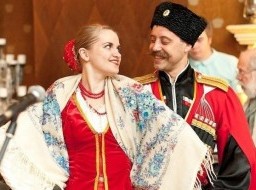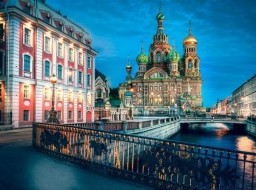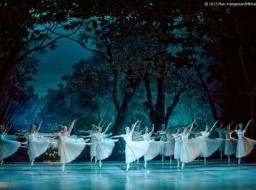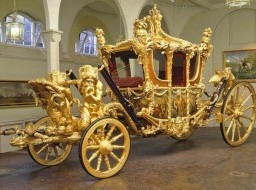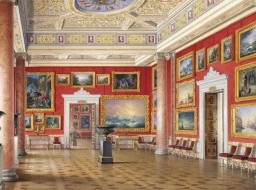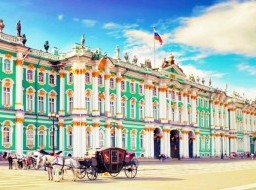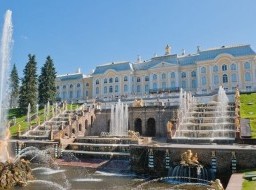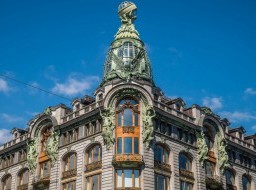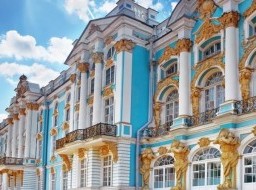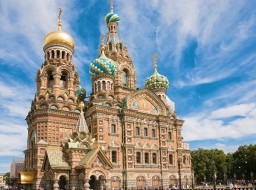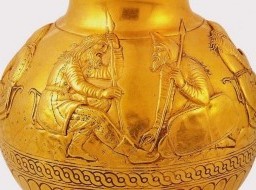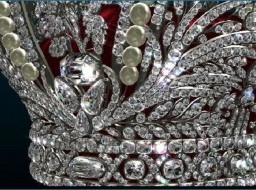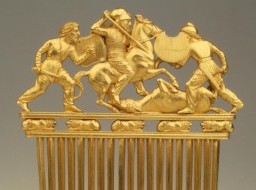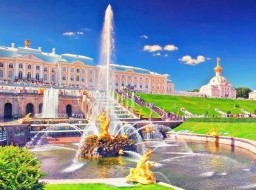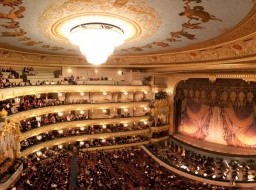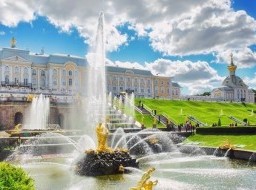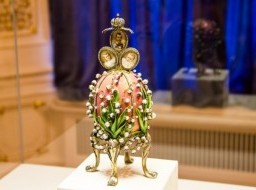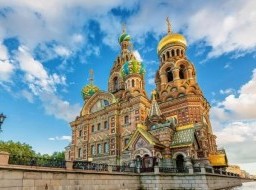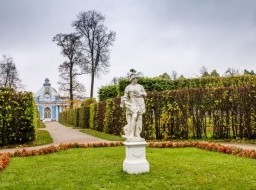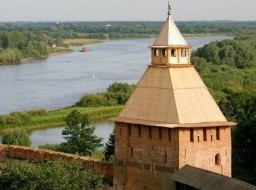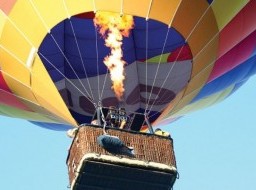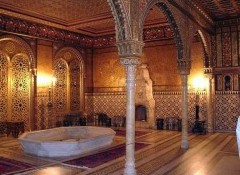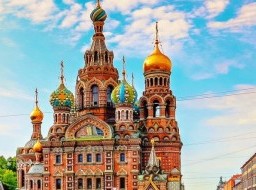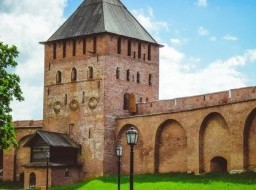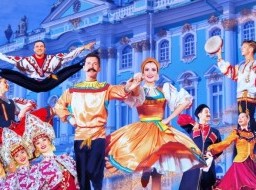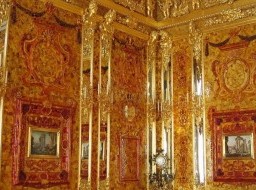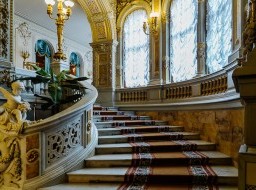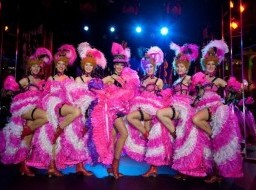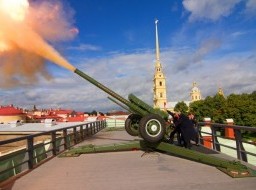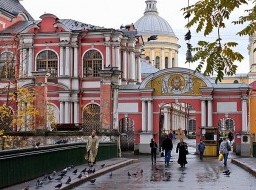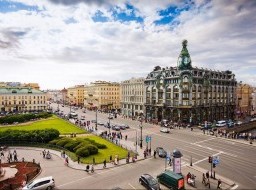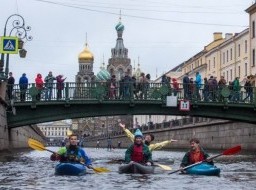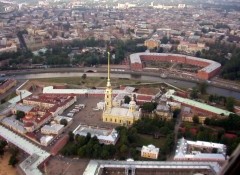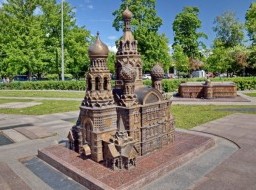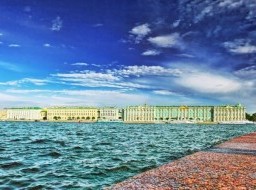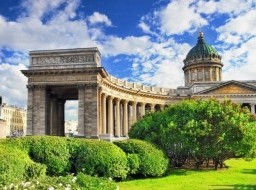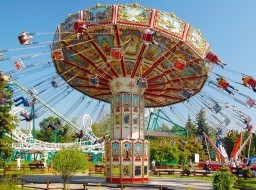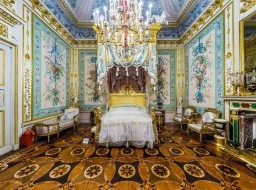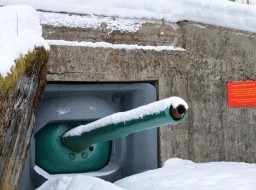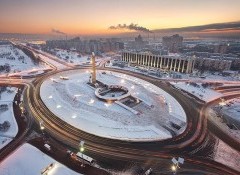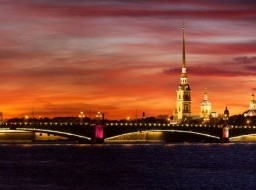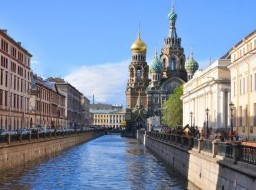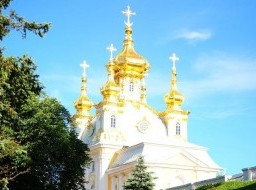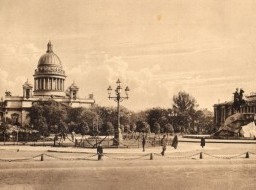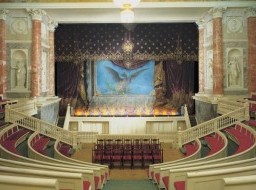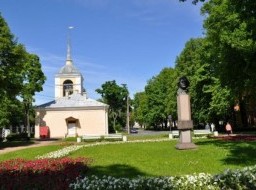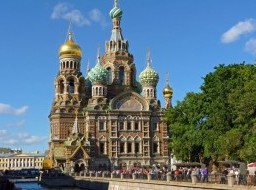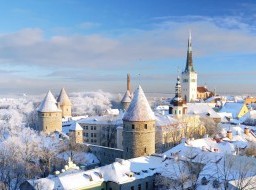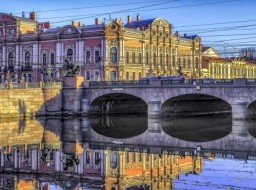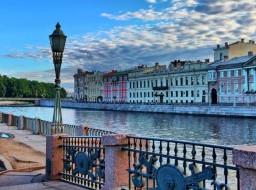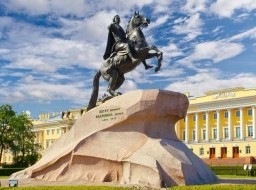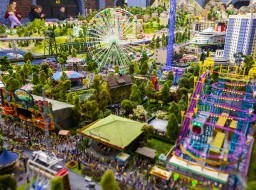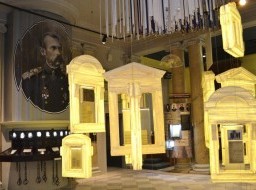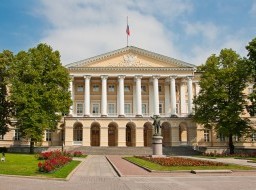Kazansky Cathedral
Whilst taking a stroll along Nevsky Prospekt you cannot fail to notice the impressive Cathedral of Our Lady of Kazan. Kazan Cathedral, constructed between 1801 and 1811 by the architect Andrei Voronikhin, was built to an enormous scale and boasts an impressive stone colonnade, encircling a small garden and central fountain. The cathedral was inspired by the Basilica of St. Peter’s in Rome and was intended to be the country’s main Orthodox Church. After the war of 1812 (during which Napoleon was defeated) the church became a monument to Russian victory. Captured enemy banners were put in the cathedral and the famous Russian Field Marshal Mikhail Kutuzov, who won the most important campaign of 1812, was buried inside the church. Located in the heart of Nevsky prospekt, Kazansky Cathedral can hardly be left unnoticed. It is a common meeting place, always crowded with tourists. People from all over Russia visit Kazansky Cathedral to pray by the icon of Our Lady of Kazan. Nearby, on the Kazanskaya square, you can see children playing by the fountains, tourists resting on benches, and street performers amusing the public. Kazansky Cathedral has suffered a lot of changes throughout its history: built to be a home of the Our Lady of Kazan icon, it was devastated during the revolution, and was made into a museum; only in 1991 was the Cathedral re-opened for church service. Kazansky Cathedral was the biggest orthodox temple in St. Petersburg until the consecration of Saint Isaac's Cathedral in 1858. From that time on, Kazansky Cathedral became the court temple, where the most significant events of the royal family were celebrated. The history of Our Lady of Kazan icon is fascinating and full of mystery. The miraculous icon's first appearance was in the 16th century, when the tsar Ivan the Terrible conquered Kazan city. In 1579, a terrifying fire broke out, devastating the city's churches and abbeys and turning half of the Kazan Kremlin into ashes. Matrone, a 10-year-old girl, dreamed of Virgin Mary showing her where the icon was hidden by the Christians during the time of Muslim mastery. The girl found the icon with her mother and it was transported to the Cathedral of the Annunciation (Blagoveschensky Sobor) – the first orthodox temple of Kazan. During the journey, two blind people – Iosif and Nikita—were cured and many more were cured afterwards. July 8th, the day of the icon's miraculous appearance, became the great orthodox holiday, which is held annually first in Kazan, and then all over Russia. Several replicas were made from the icon, some of which were declared to be wonder-working like the original one. Since the time of the Tsar Aleksey Mikhailovich, the icon of Russia's Patroness, Our Lady of Kazan, has been the protectress of the Romanov family. During the time of Peter I, the icon was transported to St. Petersburg. In front of Kazansky Cathedral stands a monument to the Commander-in-Chief of the Russian army during the Patriotic War of 1812. Duke Mikhail Illarionovich Kutuzov prayed for salvation of Russia by the miraculous icon in the Cathedral right before departing to the front. After the Russians achieved victory, military colors and some keys of French fortresses were hung on the Cathedral's walls. Most of the trophies are now kept in the Historical Museum in Moscow, while in Kazansky Cathedral are kept only six trophy colors and twenty keys in six bunches by the Kutuzov's grave. Field-Marshal Kutuzov was buried in the Cathedral's northern aisle in 1813. In 1837, monuments to the war heroes Kutuzov and Barclay de Tolly were established on Kazanskaya square. Kazansky Cathedral, designed by Andrei Voronihin, was begun in 1801 and was completed shortly before the Patriotic War in 1812. St. Peter's Basilica in Rome became an archetype for Kazansky Cathedral – a condition set by Paul the Emperor during the project development. The building stretches from west to east in the form of a Latin cross and is crowned with a dome. The Cathedral is 72.5 meters long 56.7 meters wide with a height of 1.6 meters. Its Northern front caves the Nevsky prospekt with a cambered colonnade with a portal at the end of each wing. Three entrances, decorated with columned porches and crowned with attics, lead inside the Cathedral. A gilt cross is installed on the top of the dome. Inside the temple are 56 columns made of pink Finnish granite with gilt capitals. Tessellated floor is created from gray and pink Karelian marble. Two bas-reliefs, "The Way to Calvary" and "The Arrest of Jesus in the Garden of Gethsemane", the chancel, the Sanctuary and deacons' doors, and wonder-working icon to the left of the Sanctuary doors are all significant elements of the Cathedral's decoration. |
|
